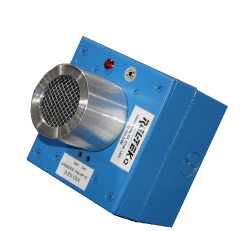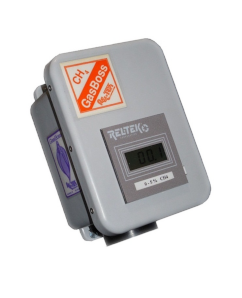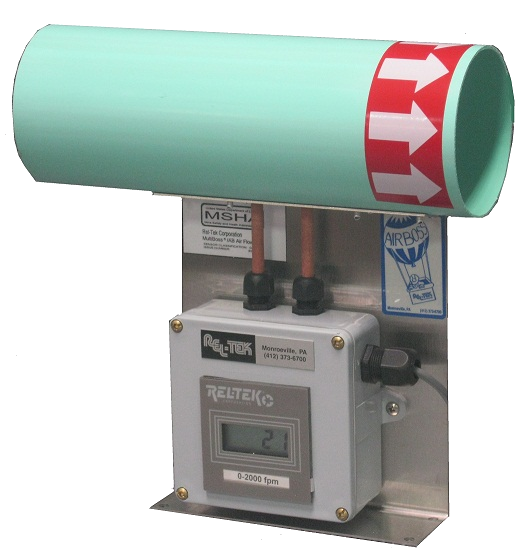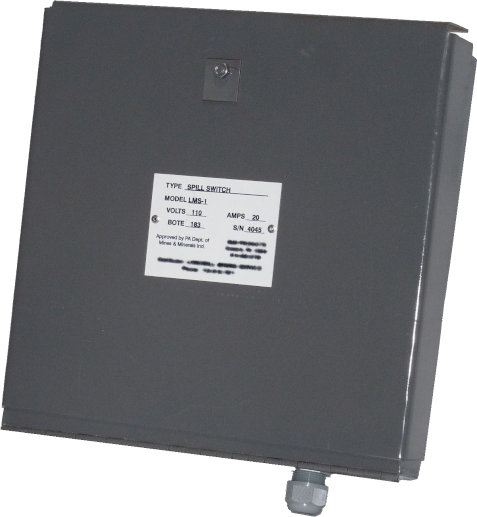FAQ
Frequently asked question
Answer #1:Rel-Tek uses advanced gas monitoring technologies that older firms are reluctant to try, because it would obsolete an ocean of old installations sold over the years. Our engineering staff is younger, enlisting the newest, most powerful technologies to outperform the stodgy catalog products of old-line competitors.
Answer #2:We are a system manufacturer, offering a full line of integrated products that collectively perform optimally to get the job done. Our competitors use buy-in products such as computers, software, telemetry, etc. to fill critical technology gaps. If anything goes wrong, these third party suppliers are usually unable and unwilling to correct systems problems. Finger pointing and warranty conflicts abound. As a complete, single source manufacturer, Rel-Tek provides complete system support, including both hardware and software.
Answer #3: Rel-Tek has supplied some of the largest and most demanding gas monitoring systems anywhere. These clients are our best sales people, willingly praising our products and services. The demonstrated high system reliability, long sensor life, automatic calibration, low maintenance, and fast, friendly support are rare commodities when dealing with competitive, old-line firms.
Answer #1:No. Our GasBoss*100 uses advanced catalytic bead techniques to
out-perform and out-last any infrared sensor. There are no mirrors to fog when cold air enters the facility, no
emitter bulbs to replace at a hefty expense, and no narrow range gas
sensitivities that ignores unexpected contributors to the explosive
mixture. Our demonstrated 20+ year MTBF
can't be challenged by competitor's NDIR units having typically 5-7 year MTBF
figures.
Answer #2: Further to the above, the
GasBoss*100 is approved intrinsically safe, allowing lower cost installation by
avoiding sealed conduit. There are no
intrinsically safe NDIR sensors, only explosion proof, so figure on the full
cost of XP installation, exacerbating the already pricey NDIR sensors. Considering the initial installation and
long-term maintenance labor, the GasBoss*100 catalytic bead sensor with its
long life and broad-range LEL response can save you a lot of money, while
enhancing safety.
Answer #1: Yes. A computer system with telemetry can reduce the installation cost by half. Home run wiring to a central control panel requires miles of wire that raises the installation cost, while telemetry places convenient field I/O panels through your facility to collect the sensor cabling, requiring just a single pair of wires between panels for telemetry.
Answer #2: Yes, again. The computer collects and consolidates all the sensor data and displays it effectively for easy viewing. Management can view the sensor values and alarm conditions quickly in one office, rather than chasing around the plant checking panel modules. Remote workstations can be networked to the central computer for displaying and analyzing key information to specialty staff.
Answer #3: Further to the above... Data and alarm logging is included with the computer software, providing archival files for offline analysis. Called data mining, this opens the door for optimizing your operations, based on prior history and events. Hard wired panels have no memory or displays for storing data or illustrating it functionally or geographically... thus no history is available.
Answer #4: Still more... MagiKal/DX automatic gas sensor calibration is a powerful feature that is available through our Millennia-DX computer software and telemetry. This performs calibration of every gas sensor in the system on a monthly or weekly schedule, all without any human intervention. Any failing sensors are flagged for service. The savings in technician labor is obvious, but there are other benefits, such as: extending sensor life, avoiding fines, lower cal-gas cost, eliminating human errors, printed documentation and improving safety.
Answer #1: First off, send us a sketch showing what you have in place. There are many ways to retrofit an alien (i.e. not Rel-Tek) installation by adding a computer, adding telemetry and even adding a MagiKal/DX automatic sensor calibration system for your existing sensors. Our applications team will review this information and make recommendations -- at no cost or obligation to you. Then, on your OK, we will work with your contractor or in-house electrician to upgrade the system with minimum disruption to your operations.
Answer #2: If your gas monitoring system is working satisfactorily, but requires a lot of routine maintenance to calibrate the gas sensors, we can just add automatic calibration without the need for any major equipment change. We do this with our OmniKal packages that intercept the 4-20ma signals from your gas sensors and generate new, calibrated 4-20ma signals that flow to your existing monitoring/alarm equipment. The OmniKal comes in 1, 4, 8, 12 and 16 sensor interface modules that are invisible to your present monitoring. These modules contain microprocessors that perform group calibrations on a weekly or monthly schedule for a year or more without attention.
Answer #1:Yes, and much more. Our Millennia-DX monitoring and control software has a visual control setup scheme where Boolean operators are connected logically using "virtual wiring."All the normal operators (or, and, inverters, etc.) are selected using click and drag commands. Inputs and outputs are selected, applied and identified. There are timers and calendar scheduling operators, as well as flip-flops, pulse generators and control expanders. Twelve pages are available for constructing large and complex strategies. The best part is that active control paths are shown in red, facilitating the tracking of controls and diagnostics.
Answer #2: More to above... Build as many screens as you wish using the draw tools included. Draw lines, ellipses, and boxes. Import bit maps from scanned drawings and photos. Insert hot buttons for click-on controls. Add digital and analog meters, as well as 8-color graphs and bar charts. Introduce sliders for changing process control set points. Type explanatory text using whatever fonts and colors you wish. Set any number of threshold crossings for analog alarm and control. Link color changes, vertical and horizontal fill, rotation, displacement and even visibility to parametric values and states. Put your logo on the screens to customize the final configurations.
Answer #3: Still more... Install around your plant a variety of I/O cards having various numbers of analog (12-bit) inputs, digital (dry contact) inputs, analog (12-bit) outputs and digital (relay) outputs. Use as many as 253 card addresses. Communicate at up to 115.2k-Baud for 20 miles over a twisted pair of wires. Network to any number of workstations via a LAN. Dial in over a phone lie to interrogate and adjust the computer parameters. Set up 26 layers of passwords for security. Millennia-DX is world-class software that can do just about anything.
Answer #1: Our strength is that we do not need to buy in a lot of high priced third party components and software to make up a system. We manufacture everything. Therefore, our system pricing is astoundingly low, considering the features included. For example, Rel-Tek's full size software package is priced at a third of what others charge for a knockdown runtime package. And, we throw in the graphics tool kit, control setup up tools and logging modules to boot.
Answer #2: We offer features that no one else does. Consider automatic sensor calibration... We developed this technology in house and applied for patent last year. To our knowledge, no competitor offers this feature, at any cost. There are a dozen of these systems operating around the country, and the clients would not give them up for anything. Rel-Tek is the designated supplier of automatic calibration systems to the Allegheny County Port Authority for its Pittsburgh/Airport Bus way Tunnels.
Answer #3: Long component life spells lower cost. Our sensors tend to have useful lives about twice that of competing products. Combining this fact with a lower maintenance effort, we should charge twice the competitor's prices; but we don't!
Our systems were originally designed and engineered for use in the coal mining industry, where computer experts just aren't available. Making our systems intuitive enables unskilled workers to use, maintain and even modify the systems in their mines and plants. If you have a question or need assistance, we can usually provide this by a phone or modem link. By keeping a few spare parts in stock, there is virtually no need for an "expert" to visit the site. If a meltdown does occur -- say, due to a computer hard drive crash, a lightning strike or other power surges, etc. -- then we stand ready to visit the site on short notice and sort out the problem.
Calibration verifies the precision and reproducibility of measurement instruments, such as sensors and measuring systems. Sensors that are calibrated are the prerequisite for precise, reliable and reproducible measurement results. Calibration is one of the key prerequisites for effective quality assurance.
A catalytic bead sensor is a type of sensor that is used for combustible gas detection from the family of gas sensors known as pellistors.
The catalytic bead sensor consists of two coils of fine platinum wire each embedded in a bead of alumina, connected electrically in a Wheatstone bridge circuit. One of the pellistors is impregnated with a special catalyst which promotes oxidation whilst the other is treated to inhibit oxidation. Current is passed through the coils so that they reach a temperature at which oxidation of a gas readily occurs at the catalysed bead (500-550 °C). Passing combustible gas raises the temperature further which increases the resistance of the platinum coil in the catalysed bead, leading to an imbalance of the bridge. This output change is linear, for most gases, up to and beyond 100% LEL, response time is a few seconds to detect alarm levels (around 20% LEL), at least 12% oxygen by volume is needed for the oxidation.
LEL stands for “Lower Explosive Limit” and is the lowest concentration of a particular gas that has the potential to be flammable or combustible. In other words, it’s the minimum amount of gas that will catch fire or explode when an ignition source is present. If a gas concentration is less than the lower limit, there is insufficient gas for the mixture to ignite.
The linear response of the catalytic bead sensor makes it very easy to predict its response to various gases and provide a correlation factor based on virtually any gas used for calibration. But most importantly, infrared sensors are not capable of detecting hydrogen.

Catalytic beads can detect more combustible gases which may make it the more appropriate choice in certain applications vs. NDIR sensors.

Lets Get in Touch!
Your inquiries will promptly be answered.
Call us
412-3736700

